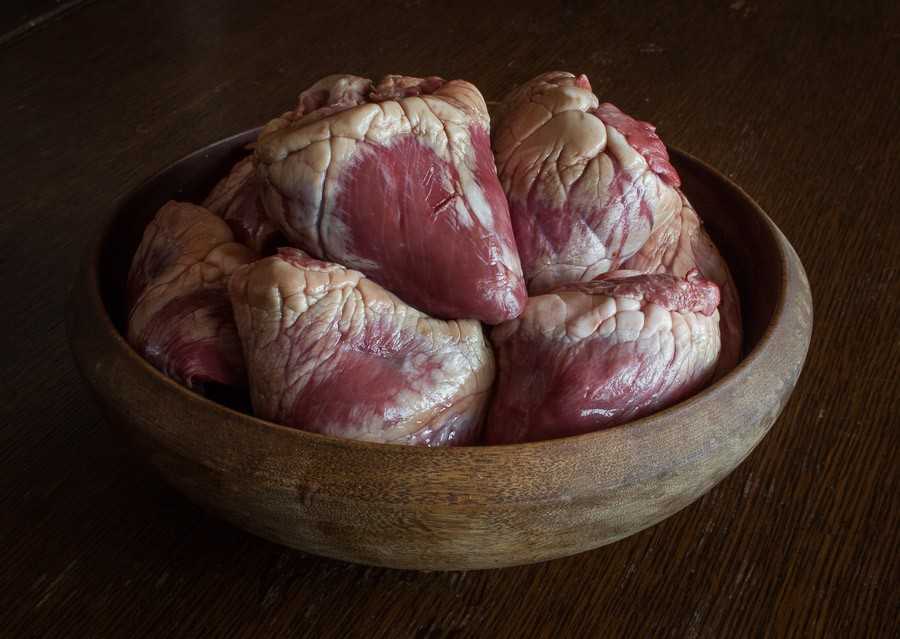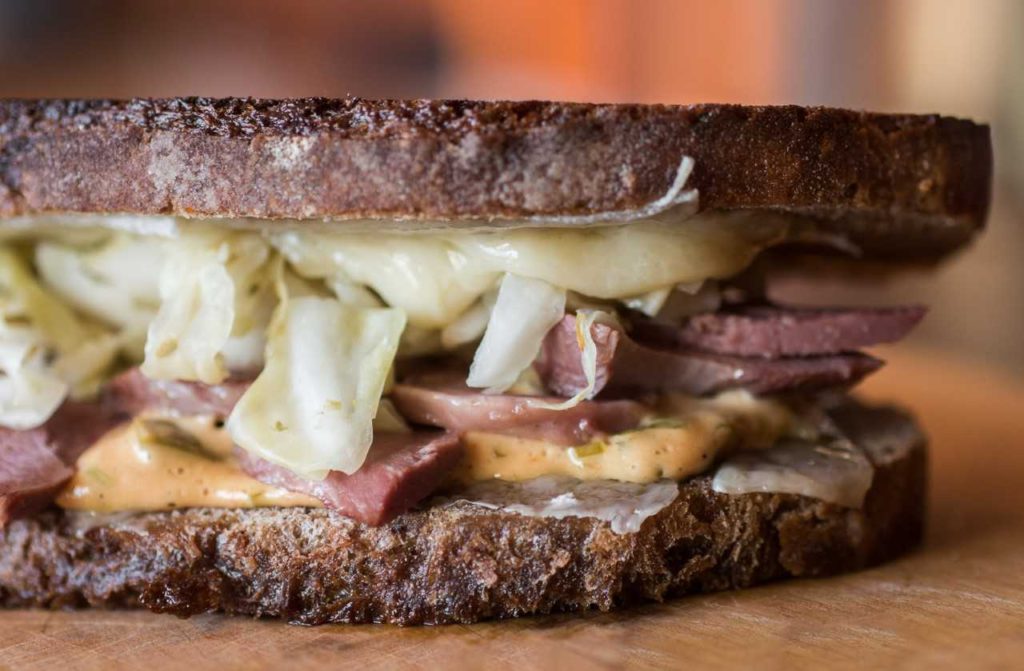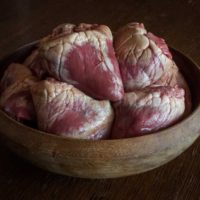Corned Lamb or Goat Heart Rueben Sandwich
Corned lamb is delicious. In this corned lamb recipe and video, Chef Alan Bergo illustrates many different cuts of lamb besides the legs can be corned, including heart and tongue.
Corning has a transformative effect on both the flavors and textures that are so often presented as organ-meat deal-breakers. After meat sits in a brine for a while and then gets thoroughly cooked, there’s a safe and comforting homogeneity to it. Everything gets soft, tender, and seasoned to a slightly salty perfection. So here, I’m going to give you my recipe for corned lamb or goat hearts. This method of corning is a great way to bring out the best not just in hearts, but in all sorts of other organ and muscle meats.
Amy Theilen uses corning to make bear-meat pastrami in Northern Minnesota, and my friend Hank Shaw uses the process for venison (as well just about as anything that flies). The possibilities are limitless. So, what do you make out of the corned heart you prepare? Since the meat has already been cooked, and the heart is lean, you don’t want to apply too much direct heat (so no grilling), but slicing and gently warming corned heart in a pan is great.
I love to make warm Rueben sandwiches out of corned heart. Here’s a simple recipe and video describing my process. This process will work with hearts from larger animals like pork and beef but will take longer to cure.
This recipe is by James Beard Award-winning Chef Alan Bergo. He’s a chef from Minnesota and author of The Forager Chef’s Book of Flora. Learn more about Chef Alan at foragerchef.com.
Looking to buy lamb or goat online? Shepherd Song Farm: Grass to table. We raise lambs & goats traditionally, humanely and sustainably. 100% Grass Fed, Pasture Raised, Never Confined, no Hormones, Grains or Animal Byproducts. Born, raised and processed in the U.S.A. Good for you and good for the environment.
More Cured and Smoked Lamb Recipes
Homemade Liverwurs from Lamb Liver
Corned Lamb or Goat Hearts
Equipment
- 1 1 gallon container for corning the lamb
- 1 large stock pot for cooking the lamb
- 1 Deep braising pan, dutch oven or casserole, capable of holding 1 gallon of liquid
- 1 plastic bag, plate or other weight for weighing down the hearts in the brine
Ingredients
- 4 Lamb Hearts roughly 1-1.5 lbs
Brine
- 2 qts water
- ½ cup brown sugar
- ½ cup kosher salt
- 5 teaspoons pink salt
- 1 tablspoon chopped garlic
- 1 heaping tablespoons pickling spices
- 1 tablespoon chopped ginger
Final braise
- 1 each medium carrot, medium yellow onion, 1 rib of celery
- 1 tablespoon chopped ginger
- 1 heaping tablespoon pickling spices
Instructions
Brine the lamb
- Toast the pickling spices, then combine with the remaining brine ingredients and bring to a simmer and cook for 5 minutes, stirring occasionally. Cool the brine to room temperature and reserve.
- Make a cut down one side of each heart so they can be opened up like a book, many hearts will already come packed like this.
- Put the hearts in the cooled brine, cover the container with plastic, or another weight to keep the hearts under the liquid as much as possible. Date the container, then refrigerate for 4 days, stirring once a day, or as often as you can remember.
Cook the lamb
- After four days, remove the hearts from the brine and put into a pot with the 4 cups of water, the remaining heaping tablespoon of toasted pickling spice, the chopped carrot, onion and celery and ginger. Bring the mixture to a gentle simmer in a covered pan and cook for 2 hours or until the hearts are tender.
- Allow the hearts to cool in their liquid until you can handle them, then remove and trim off some the fat, as well as removing the large central vein.
- For storage, strain the liquid and keep the hearts in their cooking liquid so they don’t dry out. The hearts will keep in their liquid for 5 days, they can also be wrapped tightly in plastic, labeled, dated and frozen for 3 months.
Video
Notes
Nutrition





